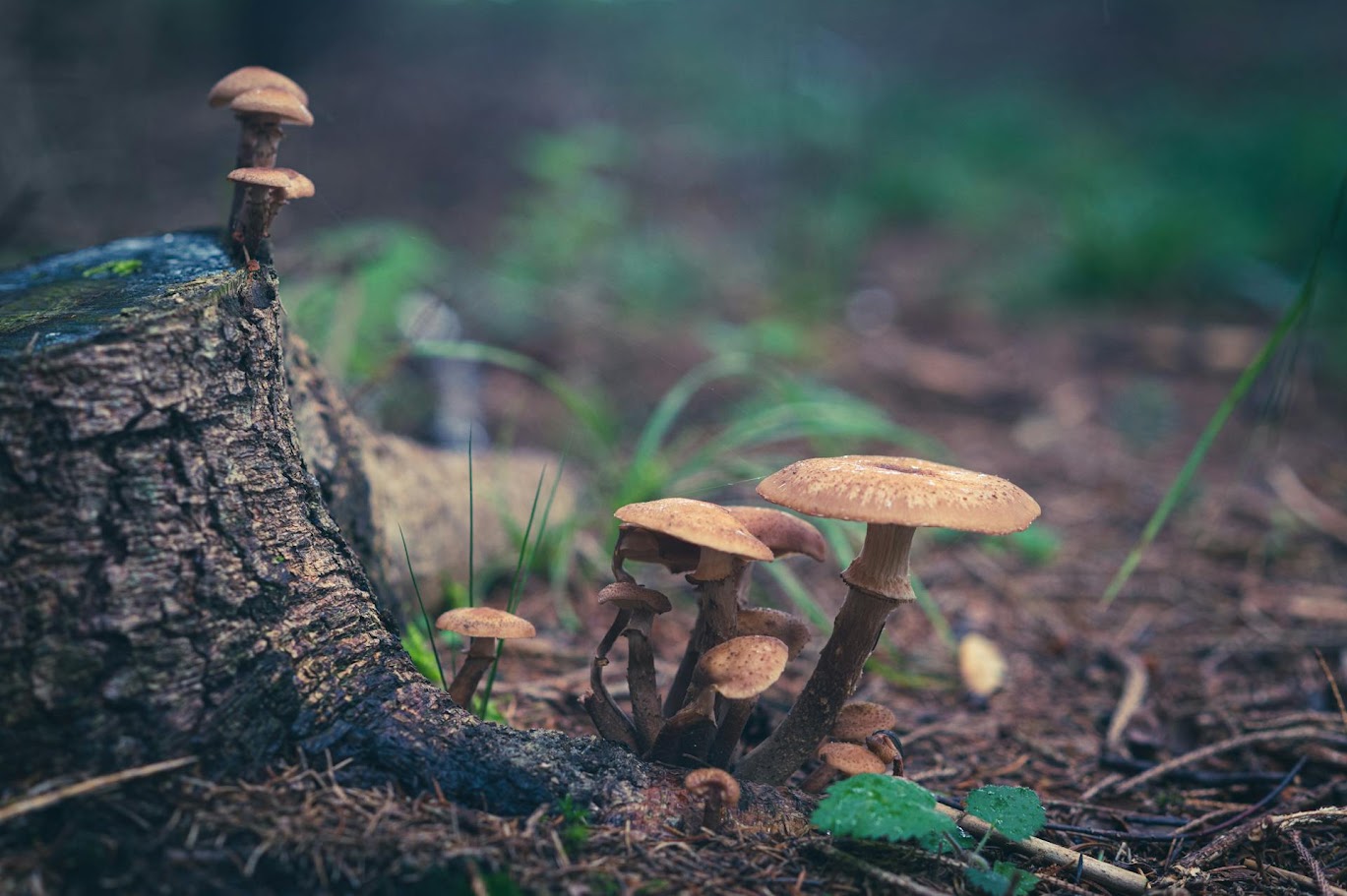
Our understanding of magic mushrooms primarily revolves around their effects. While many are aware of the significant role shrooms play in indigenous cultures of Mesoamerica over centuries, their history stretches even further back. Magic mushrooms have roots that extend to ancient times, which coincide with the era of dinosaurs.
An intriguing investigation led by Alexander J. Bradshaw, a postdoctoral researcher at the University of Utah and associates, sheds light on psilocybin and its evolutionary journey. The study delves into the transformative nature of magic mushrooms, which highlights how the mushrooms of antiquity differ from the shrooms online today.
Table of Contents
Key Takeaways:
- Magic mushrooms have a rich history across the world, which extends far beyond Central America.
- Shrooms used to be wood decomposers and later moved to a soil habitat.
- Some believe that the active compound in magic mushrooms repels insects and slugs.
What Do You Need To Know About Psilocybin Shrooms?
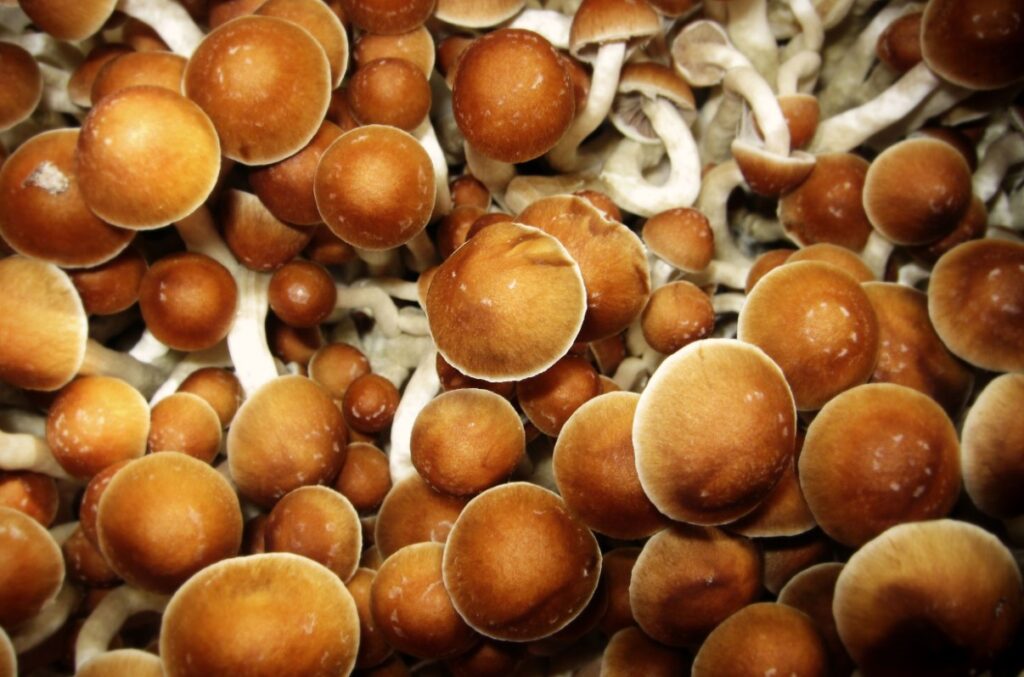
Source: cnn.com
Magic mushrooms, encompassing various species of fungi, whether found in the wild or cultivated, harbour a notable component called psilocybin. This naturally occurring compound holds the key to its psychoactive and hallucinogenic effects. It’s a common misconception to perceive magic mushrooms as a singular entity; however, reality reveals a diverse spectrum.
While Psilocybe cubensis reigns as a favourite, the realm of magic mushrooms extends beyond 180 identified species. Each species presents nuances while sharing overarching effects, which ensures a unique journey contingent upon dosage and potency.
These mushrooms have a rich history spanning various cultures worldwide, and their versatile uses have been part of human traditions over the years. Scientists have uncovered evidence of shroom utilization in historical contexts.
- 10,000 BCE: Mural of mushrooms and psychedelic imagery in Northern Australia.
- 4,000 BCE: Mushroom rock paintings in Spain
- 1,500 BCE: Religious and spiritual ceremonies in Central America encompass a spectrum of practices aimed at divination, healing, pain relief, and communal celebrations.
- Siberia: Indigenous tribes utilized Amanita Muscaria.
- Greece: In rituals venerating the goddess Demeter, participants consumed a psychoactive concoction suspected to contain psychedelic mushrooms.
- Egypt: There was a rich array of artwork featuring what appear to be representations of magic mushrooms. These depictions suggest that sacred mushroom rituals were part of the practices, particularly among priests and the elite class.
Today, people incorporate shrooms into various aspects of their lives, from ceremonial practices to recreational enjoyment. Recent studies on the active compound have garnered significant attention, propelled by scientific advancements. These studies illuminate the benefits of this compound, which hints at its possible role as an adjunct treatment option.
The Pre-Historic Origins: Gene Mutation and More
The University of Utah, in collaboration with the Natural History Museum of Utah (NHMU), concluded a study examining the genomic diversity present within the Psilocybe genus. Their comprehensive investigation involved the analysis of 52 specimens belonging to the Psilocybe genus.
The Psilocybe genus stands out as one of the most prevalent among psychedelic mushrooms. Their cultivation is relatively straightforward for many varieties. They thrive across nearly all continents worldwide.
Distinguishing the Psilocybe genus from others like Hypholoma or Stropharia presents a challenge. Often grouped as “little brown mushrooms” (LBMs), members of these genera share similar characteristics, which complicates identification.
The study’s findings revealed a significant revelation about the origin of Psilocybe, which dates back approximately 65 million years. The researchers believed that it coincided with the era of the cataclysmic asteroid event that triggered widespread extinction.
The research traced the inception of psilocybin synthesis to mushrooms within the Psilocybe genus. The analysis identified multiple instances of horizontal gene transfers, which influenced the genetic makeup of other mushrooms for 40 to 9 million years.
Study on the Evolution of Active Compounds
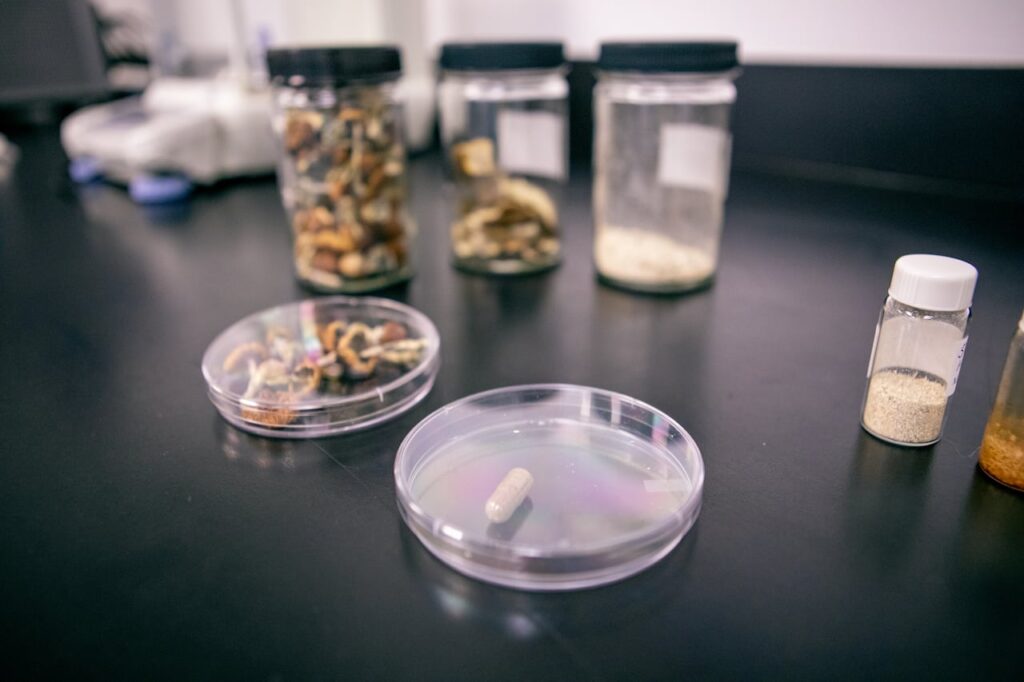
Source: cbc.ca
The researchers’ analysis unveiled two distinct gene arrangements within the gene cluster responsible for psilocybin production. These patterns align with an ancient divergence in the genus, which indicates separate occurrences of psilocybin acquisition in its evolutionary journey.
Researchers examined the DNA of Psilocybe shrooms from museum specimens, of which twenty-three were “type specimens.” They serve as a benchmark for species identification.
Previous studies showed a cluster of four core genes responsible for psilocybin production through genomic analysis of three Psilocybe species. In this recent study, the researchers found a distinct pattern after looking into the genomes of 52 Psilocybe specimens.
The analysis revealed that 17 specimens retained the original gene order, while 35 exhibited the novel pattern.
Researchers unveiled an ancient split of the two gene cluster patterns approximately 57 million years ago. Initially emerging as wood decomposers, the first psilocybin-producing mushrooms later adapted to soil habitats post-split, with certain species like Psilocybe cubensis transitioning to thrive on herbivore dung.
This ecological shift towards dung occurred independently at least twice in their evolutionary trajectory.
Why Do Magic Mushrooms Contain Psilocybin?
Molecular dating placing Psilocybe around 65 million years ago suggests a potential role for psilocybin as a deterrent against slugs.
The authors are gearing up for experiments to test the Gastropod Hypothesis. Psilocybe’s emergence coincides with the catastrophic asteroid impact and aligns with the flourishing of fungi and terrestrial gastropods during the ensuing darkness and decay.
We know psilocybin’s molecular architecture mirrors serotonin, tightly binding to serotonin receptors. This interaction induces unusual behaviours. Due to this effect on mammals, some speculate that this could deter predators directly, while others suggest psilocybin may act as a laxative or induce vomiting to disperse spores.
The sporadic occurrence of psilocybin mushrooms in the wild challenges the notion of learned avoidance by animals. An alternative hypothesis proposes psilocybin as a chemical defence against insects.
The Importance of Understanding The Pre-Historic Development of Magic Mushrooms
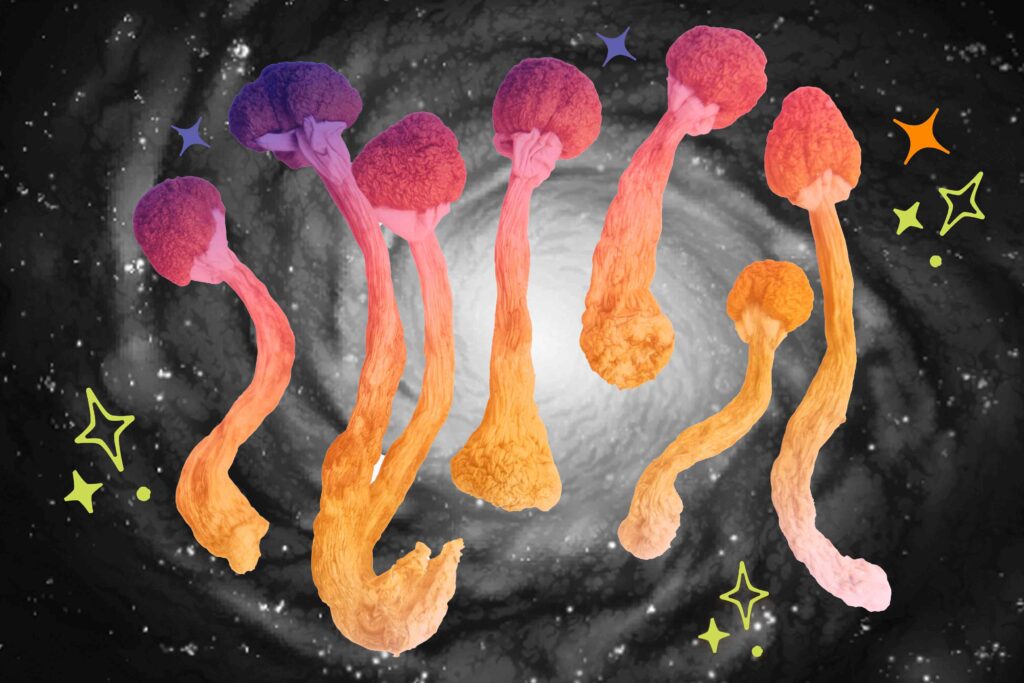
Source: verywellmind.com
Current researchers acknowledge the link between understanding the molecular level for potential benefit.
If psilocybin possesses remarkable therapeutic potential, it is necessary to enhance its effectiveness. This requires an in-depth molecular investigation leveraging biodiversity to understand the substance produced by these mushrooms.
Jason Slot, an assistant professor of fungal genomics at Ohio State University, emphasizes the significance of genome sequencing in unravelling the mysteries of mushrooms.
He describes their research work as providing a methodological roadmap for future discoveries in fungal pharmaceuticals and shedding light on biological enigmas with profound implications for both social and medical spheres.
Psilocybin’s therapeutic effects on treatment-resistant depression, end-of-life anxiety, etc., have garnered attention. This area of research holds promise for novel treatments and invites further exploration into the applications of natural compounds.
Magic Mushroom (Psilocybe cubensis) Strains to Explore
| STRAIN | PSILOCYBIN CONTENT | APPEARANCE |
| Blue Meanies | 0.67% |
|
| Golden Teacher | 0.66% |
|
| Penis Envy Cubensis | 0.94% |
|
| Alacabenzi | 0.67% |
|
| Albino Penis Envy | 0.93% |
|
Conclusion
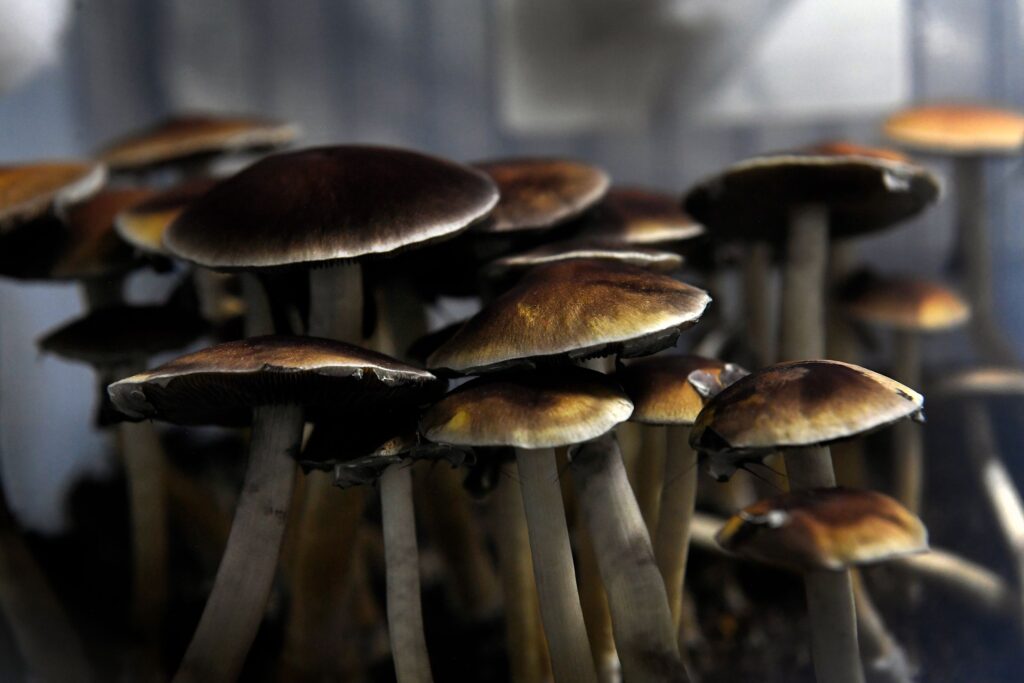
Source: cnn.com
What we know about magic mushrooms from the past and currently is but a glimpse into the vast potential of this fascinating fungi. Exploratory studies delving into its evolution and deeper understanding of its properties hold promise for numerous benefits. This research can pave the way for advancements to aid in the treatment of various current conditions.
Frequently Asked Questions
Is there a distinction between naturally occurring magic mushrooms and those purchased online?
Only a few details explain the variance between wild and cultured mushrooms. Commercially cultivated varieties exhibit a notable change in genetic variation. The naturalized population displays significantly greater diversity, which boasts distinct gene variants governing the synthesis of the mushroom’s active compound.
How do mushrooms cause altered perception in humans and other animals?
Magic mushrooms influence the brain’s prefrontal cortex, which is responsible for abstract thinking, thought analysis, and mood and perception. They also have the potential to induce hallucinations.
How did psilocybin evolve?
It’s unlikely that psilocybin production spontaneously evolved in distinct mushroom species. Since these species aren’t related, it’s pretty clear that vertical gene transfer—passing down genes from parent to child—is not responsible either. Instead, the researchers surmised that horizontal gene transfer must be the culprit.
The general public doesn’t grasp horizontal gene transfer when considering evolution. Evolution is a gradual process involving random genetic changes that inadvertently enhance a species’ adaptation to its surroundings, which offspring inherit.
What does psilocybin offer to humans?
Several papers are currently available on the impact of psilocybin on depression, obsessive-compulsive disorder (OCD), and substance use disorder. It demonstrates a relatively safe profile and yielded reductions observed across various psychiatric rating scales.
The research on depression stands out with the most robust evidence, bolstered by multiple randomized controlled trials.







